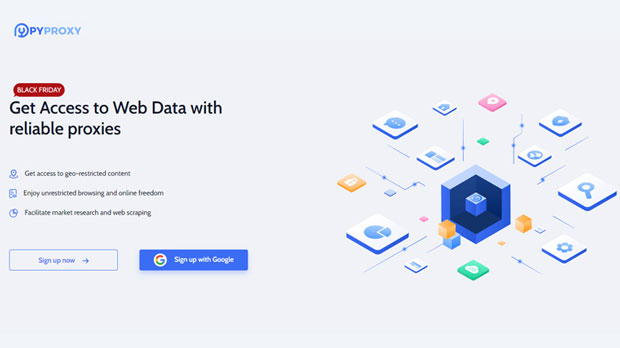In high-concurrency environments, optimizing HTTP proxy performance is crucial to ensuring smooth data flow and minimizing latency. A proxy server acts as an intermediary between a client and the server, forwarding requests and responses. When dealing with high traffic, the proxy must handle numerous concurrent connections efficiently to avoid performance bottlenecks. This requires addressing several areas such as connection management, caching strategies, resource allocation, and hardware optimization. In this article, we will explore various methods and techniques to enhance the performance of HTTP proxies, ensuring they can scale effectively in high-demand scenarios. 1. Connection Management OptimizationOne of the most significant factors affecting the performance of HTTP proxies under high-concurrency conditions is connection management. A proxy server typically handles multiple client requests concurrently, and if not managed efficiently, it can lead to resource exhaustion and slow response times.Persistent Connections HTTP/1.1 introduced the concept of persistent connections, which allows multiple requests to be sent over a single TCP connection without the need to re-establish a new connection for each request. In a high-concurrency environment, using persistent connections significantly reduces the overhead caused by connection establishment, leading to improved performance. Additionally, HTTP/2 further optimizes this by allowing multiplexing, where multiple requests and responses can be sent over a single connection concurrently.Connection Pooling To handle a large number of requests efficiently, connection pooling is another essential technique. By reusing established connections, proxies can reduce the time spent on setting up new connections and decrease the load on the underlying network infrastructure. Implementing connection pools ensures that idle connections are not closed prematurely, allowing for faster response times and better resource utilization.TCP Keep-Alive TCP Keep-Alive mechanisms ensure that idle connections remain open for a longer period, reducing the need for new connections to be established. This is especially useful in scenarios where there are long periods of inactivity between requests. However, it is essential to balance the timeout periods to avoid overloading the server with unnecessary open connections.2. Caching StrategiesCaching is a crucial technique in optimizing HTTP proxy performance, particularly in environments with a high volume of requests. By storing frequently requested data locally, the proxy can serve responses faster without needing to forward requests to the origin server.HTTP Caching Headers HTTP headers such as `Cache-Control`, `ETag`, and `Last-Modified` provide critical information for managing cached content. Setting proper cache expiration policies and using conditional GET requests based on the `ETag` or `Last-Modified` header can minimize the need to fetch the same resource repeatedly from the origin server. Proxies can implement cache control strategies such as time-based expiration or cache purging when content changes to keep cached data fresh.Edge Caching Edge caching involves deploying proxy servers closer to the client, such as at edge locations or Content Delivery Network (CDN) nodes. By caching content at the edge of the network, proxies can serve data more quickly to end users, minimizing latency and improving response times. This approach is particularly effective in global applications where users are geographically dispersed.Cache Hierarchies In large-scale deployments, proxies can implement multi-level cache hierarchies, where multiple layers of caches are used to store content at different points in the network. This technique helps distribute the caching load and ensures that popular content is served quickly from the nearest cache.3. Resource Allocation and Load BalancingEfficient resource allocation and load balancing are essential for handling high concurrency and preventing bottlenecks in an HTTP proxy.Dynamic Resource Allocation In high-demand environments, resource allocation should be dynamic to adjust to changing traffic patterns. Proxies should be able to allocate more resources (e.g., CPU, memory) to handle peak loads and reduce them during periods of low traffic. This can be achieved by using elastic scaling mechanisms, where additional proxy servers are provisioned during periods of high traffic and decommissioned when the load decreases.Load Balancing Load balancing ensures that incoming requests are evenly distributed across multiple proxy servers, preventing any single server from becoming overwhelmed. Load balancing can be performed at different layers, such as DNS load balancing, HTTP load balancing, or even TCP-level load balancing. By using techniques like round-robin, least connections, or IP hash-based routing, proxies can optimize resource utilization and improve system availability.4. Hardware and Network OptimizationThe physical hardware and network infrastructure on which the HTTP proxy runs also play a significant role in its performance under high concurrency.High-Performance Hardware Investing in high-performance hardware, such as multi-core processors, large amounts of RAM, and fast network interfaces, is crucial to supporting the demands of high-concurrency environments. With faster processors and more memory, proxies can handle more connections simultaneously and process requests more quickly. Additionally, using SSDs for storage ensures fast read and write operations for cached data.Network Optimization Network performance can be optimized by reducing packet loss, minimizing round-trip time (RTT), and ensuring high bandwidth availability. Proxies should be deployed in data centers with low-latency network connections to minimize delays. Additionally, implementing Quality of Service (QoS) policies to prioritize traffic can ensure that critical requests are processed with minimal delay.5. Software and Protocol OptimizationsSoftware optimizations and protocol enhancements can further improve the efficiency of HTTP proxies in high-concurrency environments.Protocol Upgrade (HTTP/2 and HTTP/3) Upgrading the proxy to support modern protocols such as HTTP/2 and HTTP/3 can lead to significant performance improvements. HTTP/2’s multiplexing, header compression, and server push capabilities reduce latency and optimize the handling of multiple concurrent requests. HTTP/3, built on QUIC, offers even lower latency and better performance under high-loss networks.Request Prioritization Request prioritization allows the proxy to process important requests first, ensuring that critical data is served quickly. For example, an HTTP proxy can prioritize requests based on factors such as user device type, request frequency, or content type. This ensures that important user requests are not delayed by less important ones.6. Monitoring and Metrics CollectionContinuous monitoring and the collection of performance metrics are essential for identifying issues and optimizing the proxy server.Real-Time Monitoring By monitoring key metrics such as response time, throughput, error rates, and resource utilization in real time, administrators can quickly identify performance bottlenecks and take corrective actions. Tools like Prometheus, Grafana, or custom logging solutions can be used to gather and visualize these metrics.Automatic Tuning Some proxies support automatic tuning features that adjust configurations based on observed traffic patterns. For instance, the proxy may automatically adjust the size of its connection pool or tweak caching strategies based on real-time performance data.Optimizing HTTP proxy performance in high-concurrency environments requires a multifaceted approach that includes efficient connection management, caching strategies, load balancing, hardware optimization, and the use of modern protocols. By implementing these techniques, proxies can handle large volumes of concurrent requests while maintaining low latency and high throughput. Continuous monitoring and resource allocation adjustments are key to ensuring that the proxy performs optimally under varying traffic loads. With the right optimizations, HTTP proxies can deliver exceptional performance and scalability, meeting the demands of high-concurrency environments.
Oct 16, 2025



































































